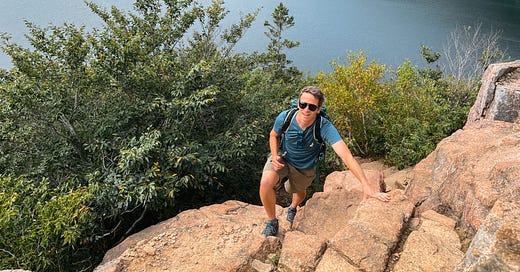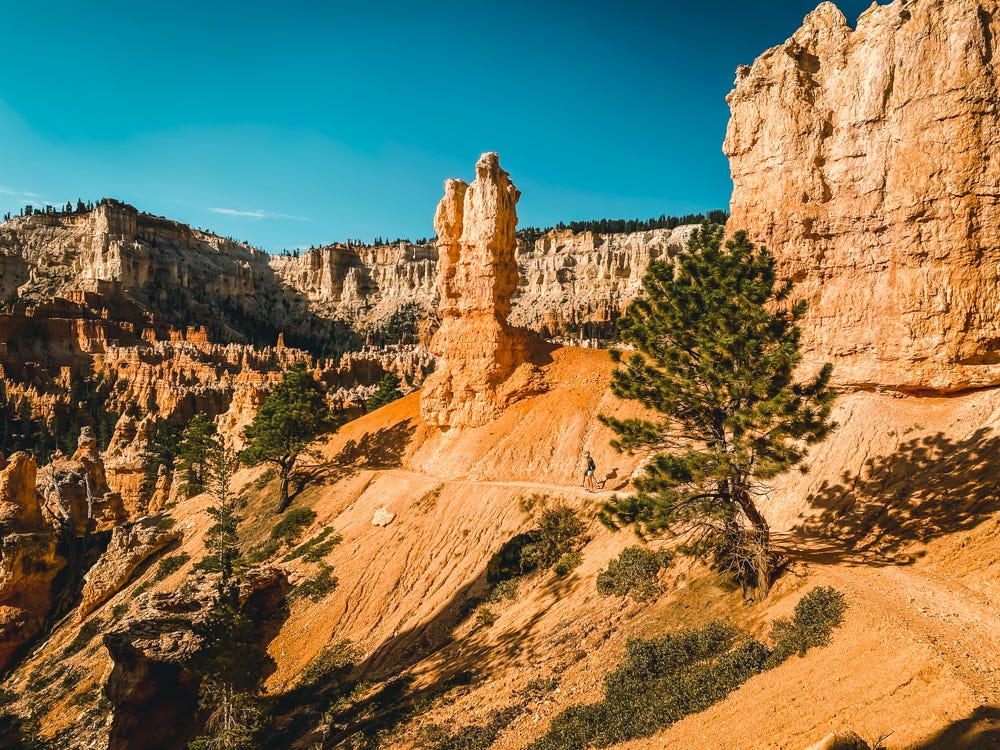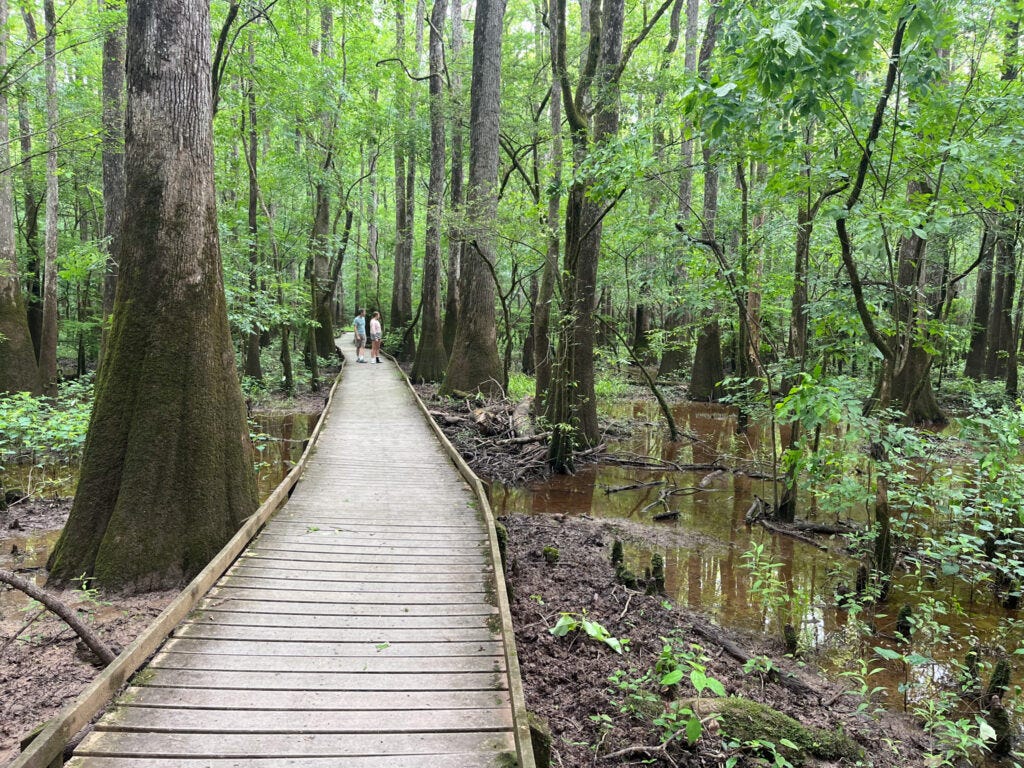From towering mountain ranges to dramatic red rock canyons, the U.S. National Parks are incredibly diverse, breathtakingly beautiful, and brimming with adventure. With something to offer every traveler, they are also surprisingly affordable and ideal for road trips. In this guide to planning a National Parks trip, we’ll walk you through how to choose the best park, build an itinerary, and organize the perfect adventure.
Below, you’ll find everything you need to start planning Our family is passionate about visiting U.S. National Parks and we’re currently on a mission to see all 63! You can find even more helpful resources on our National Parks page.
You can read an even more extensive guide here or head over to the Chasing ADVNTR page to get my webinar.
How to Use This Guide for Planning a National Parks Trip
We created this guide to help you plan your trip to the U.S. National Parks. Start with the first section below to understand the key things to consider early on. Then move on to the more detailed advice about lodging, transportation, and activities.
Many campgrounds require reservations six months in advance, so we recommend beginning your planning process 6–8 months ahead of your trip. This gives you enough time to book flights, accommodations, and transportation. Activities should be scheduled 2–4 months ahead (note: many parks require timed entry reservations at least 4 months in advance).
A Quick Overview of the U.S. National Parks
The National Park system is one of America’s greatest legacies. It began in 1872 with the creation of Yellowstone National Park, which set off a worldwide movement to protect natural spaces. Today, thousands of national parks exist across the globe, preserving some of the planet’s most remarkable landscapes.
In the U.S., there are currently 63 official National Parks and over 400 National Park Service sites, including monuments and historic landmarks, spread across all 50 states and covering more than 84 million acres. They’re the perfect destinations for your next road trip adventure.
What to Consider When Choosing a National Park
The first step in planning a National Parks trip is choosing which park, or parks, you’d like to visit. Your decision will depend on factors like travel time, season, budget, and personal interests. There’s no single “best” park; each one is unique. Here are some key points to keep in mind:
Weather
The time of year will significantly impact your experience. If you’re traveling in winter, parks in Alaska might be difficult to access. Summer may be too hot for a visit to the Grand Canyon. Alternatively, if you’re flexible on timing, choose the best season for the park you want to visit. For example, research when to go to the Everglades to avoid humidity, bugs, or seasonal road closures.
Activities and Landscapes
Your interests should guide your choice. If you love mountain hikes, try the Grand Tetons. If you’re drawn to coastal beauty, consider Acadia. For jaw-dropping canyons and dramatic landscapes, Zion is a top pick.
Spend some time exploring what each park offers. A guidebook or website can be a great source of inspiration.
Crowds
Many National Parks draw millions of visitors each year. While summer is ideal weather-wise, it’s also peak season. This means fully booked accommodations, crowded trails, and limited parking. Parks like Rocky Mountain National Park even require timed entry during busy months.
If possible, plan your visit during the shoulder season for fewer crowds and good weather. If you’re visiting in peak season, prepare for crowds and book early.
Trip Length
Some parks can be explored in a day, while others (like Yellowstone) require several days. You can also string together multiple parks into a road trip itinerary. For short getaways, pick one park. If you’ve got more time, consider a multi-park journey.
Our family spent a month exploring parks in the summer of 2021, you can check out that itinerary [here].
Location
Naturally, proximity plays a role. Visiting a nearby park means fewer travel expenses. If flying, consider parks close to major airports. Be sure to factor in transportation logistics.
Budget
National Parks are among the most budget-friendly travel destinations. You can road trip, camp, and cook your own meals to keep costs low. If you prefer more comfort, many parks have nearby resorts, lodges, and guided excursions.
National Parks Trip Planning
Once you’ve chosen your destination, it’s time to start planning. The sections below cover key steps like researching parks, creating an itinerary, and booking travel and accommodations.
Researching the National Parks
There are endless resources to help you get started—from travel blogs and Instagram accounts to guidebooks and the National Park Service website. Here are a few of our favorites:
Chasing ADVNTR – Find trip planning tools or let us help plan your trip
We also highly recommend keeping a National Parks guidebook on hand. Many parks have limited cell service, so don’t rely solely on your phone. Lonely Planet’s National Parks series is a great place to start.
Planning an Itinerary
Creating an itinerary can be fun, or overwhelming. We break down our road trip planning strategy in this post.
We like to start by building a custom map using Google My Maps (visit: www.google.com/mymaps). Pin your must-see sights and activities, then connect them to visualize your route. This helps you organize your trip and identify the most efficient travel path.
From there, build your day-by-day plan using a spreadsheet, document, or notebook, whatever works best for you.
Transportation
You’ll need to consider both how to get to the park and how to get around once you’re there.
Tour Companies
Some parks can be visited with the help of local or national tour companies. You’ll find day tours and multi-day options on platforms like Viator, or through your hotel or campground.
Cars
Driving is usually the most flexible and efficient way to explore. Even parks with shuttles (like Zion) have areas not served by public transit. Having a car gives you complete freedom.
Downsides include parking challenges and traffic during peak seasons. Arrive early or visit later in the day to avoid congestion.
Campervan or RV
Combining your vehicle and lodging, RVs and campervans are great for long trips and provide extra comfort. But be mindful that some park roads are narrow or have vehicle size restrictions. Parking can also be tricky.
Airplanes
If you’re traveling a long distance, flying may be your best bet. From there, you’ll typically rent a car or use local transport options to reach the park. Look for parks close to major airports to simplify travel.
Keep exploring,
National Park Journal







